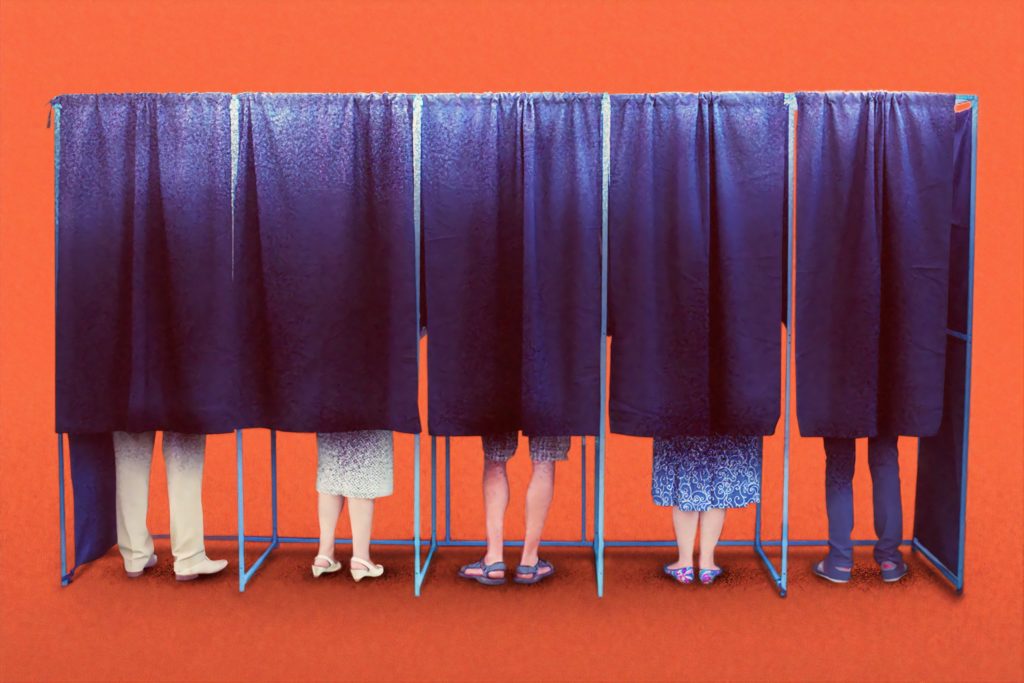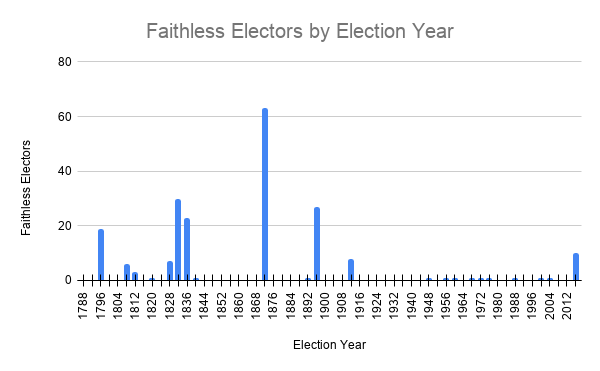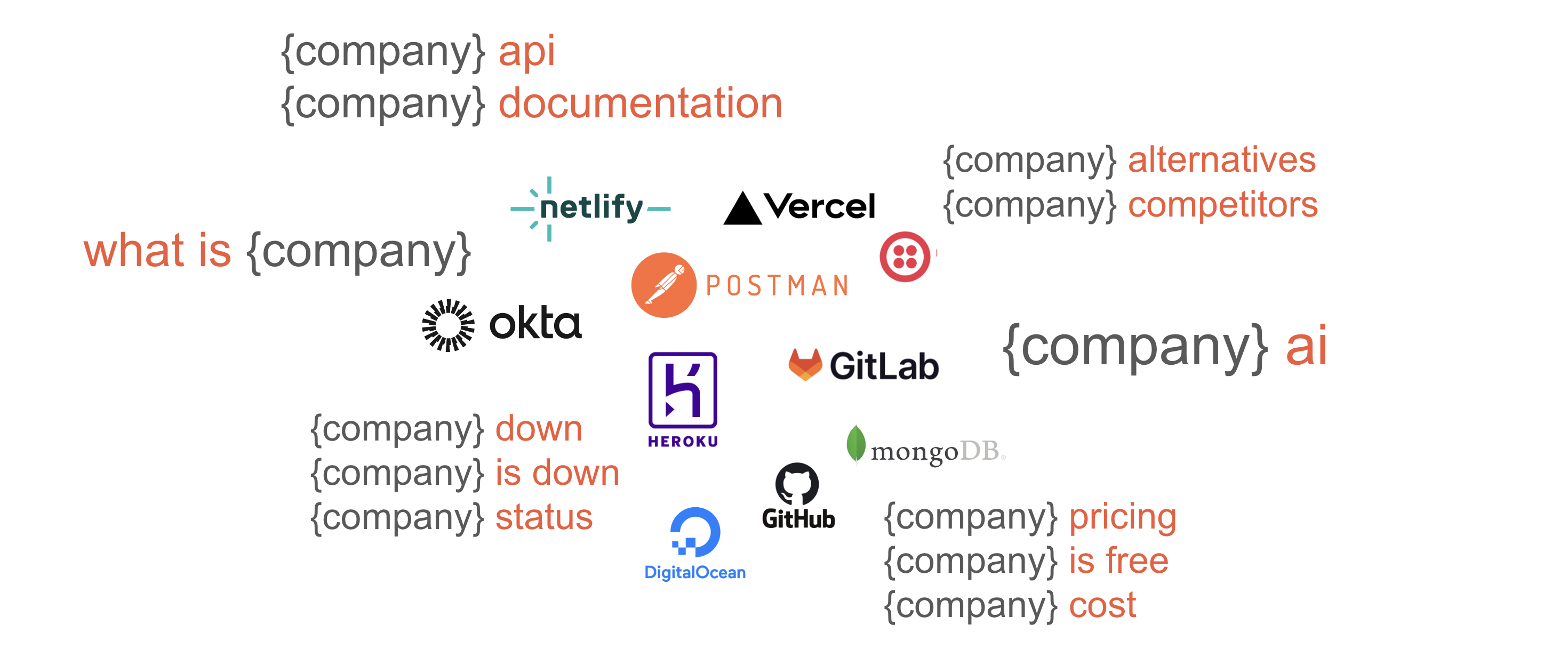Every Faithless Elector in US History on One Map
In July 2020, the United States Supreme Court unanimously decided that states can require electors to support the winner of their popular vote. Those who don’t may be punished with a faithless elector fine or by being removed from the post altogether. Now, a faithless elector is not one who eschews religion. The term refers to a member of the U.S. Electoral College who doesn’t vote for the presidential or vice-presidential candidate they had pledged to vote for. That is, they break faith with the candidate they were pledged to and vote for another candidate, or fail to vote altogether.
Historically, political parties have been successful at keeping their electors faithful. But that makes the 165 cases of faithless electors all the more interesting, whether the reasoning is the death of a candidate, a form of protest, or even a simple spelling mistake. In the wake of SCOTUS’s monumental decision, let’s take a look back at the elections with faithless electors.
View Faithless electors in a full screen map
After cross-referencing Wikipedia’s List of faithless electors with FairVote.org‘s list, we identified 165 faithless electors. We note their name (if available), political affiliation, and the presidential or vice-presidential candidate (or non-candidate!) they voted for instead. You may sort the map by election year or party. Alternatively, read on for insights on the election years with the most faithless electors in U.S. history.
Election Years With Faithless Electors in the Double-Digits
As of 2016, there have been 20 elections with at least one faithless elector. Several elections even saw 10 or more faithless electors. When combined, these double-digit elections account for over 76% of the faithless electors, so let’s take a closer look.
- 1872 – 63 faithless electors
- 1832 – 30
- 1836 – 23
- 2016 – 10
The many faithless electors of 1872 were due to the death of the Liberal Republican Party’s nominee for president. Horace Greeley passed away before the Electoral College could vote, so 63 of the 66 electors pledged to him voted for other candidates. The year saw the most faithless electors in U.S. history, more than double even the next most.
The election of 1832 resulted in the first of many faithless electors who had issues with Martin Van Buren or his running-mate. That year, 30 electors from Pennsylvania refused to support Democratic V.P. candidate Martin Van Buren. Four years later in 1836, 23 Virginia electors pledged to Van Buren (for President) and Richard Johnson (for Vice President) abstained from voting for Johnson. This was the first abstention in faithless elector history.
Interactive Maps Made Easy
Sign Up NowThen there’s the 144-year gap between the previous most recent election to have faithless elector numbers in the double-digits (1872) and 2016. Ten electors worked to alter the result of the election in 2016. The electors consisted of eight Democrats and two Republicans. Now, let’s break down the political parties of faithless electors and the states they were supposed to represent.
Demographics: States and Parties of Faithless Electors

With 165 instances of faithless electing, there have to be some commonalities—perhaps location and party? Let’s go over the demographics of past faithless electors.
Electors From These States Are the Most Faithless
You know the saying “Never trust an elector from Pennsylvania“? Well, neither do we, but if the phrase ever caught on, it would be based on truth. Of the 165 faithless electors in total, 31 represented the Keystone State.
As for other states with plenty of faithless electors? Virginia has been the home state of 24 of these electors while both Missouri and Georgia have had 15. But what about the political party of these electors?
The Faithlessness of This Party is Elect-rifying
Of the six distinct political parties on the map, the party most faithless electors align with is that of the Democrats. In fact, 73 of the 165 faithless electors in U.S. history lean left. The party with the second-most of these electors is the Liberal Republican party; 63 members were faithless in the 1872 election.
Republicans have had 14 faithless electors while the other parties represented include Democratic-Republicans, the People’s Party, and Federalists with under 10 each.
Election Years Without Faithless Electors
Based on the previous information, you might think there’s at least one faithless elector in every election. However, this is not the case. There are several elections in U.S. history sans a single dissenting elector.


Notably missing on the graph are the Obama years. The elections with zero faithless electors this century took place in 2012 and 2008 when Barack Obama was on the ticket. Although to be fair, the one faithless elector in 2004 likely made a spelling mistake. The anonymous Minnesota elector cast a presidential vote for the V.P. candidate “John Ewards” [sic], rather than John Kerry. As a result, Minnesota amended its law so that votes cast for someone other than the candidate to whom the elector is pledged are invalidated.
Other notable election years when faithless electors were absent include 1964, which broke up what might otherwise have been a streak of six elections with faithless electors. As for the longest streak of elections sans this type of electors? From 1944 until 1916 (eight elections in a row) there were no instances of faithless electing. Another long streak occurred further back from 1868 to 1844, or seven election cycles long.
There has only ever been one election in which faithless electors changed the result (1836, though even that was fruitless as the V.P. candidate, Richard Johnson, was ultimately voted in by Congress). However, it’s still cool to look back on the history of faithless electors as there’s likely to be significantly fewer in the future thanks to the Supreme Court’s ruling.
For more election-related maps, read about the Births and Burials of US Presidents or the birthplaces of V.P.s, The President Abroad: International Travels Of U.S. Presidents, and Presidential Assassination Attempts Mapped. Otherwise, elect to make a map today at batchgeo.com.

